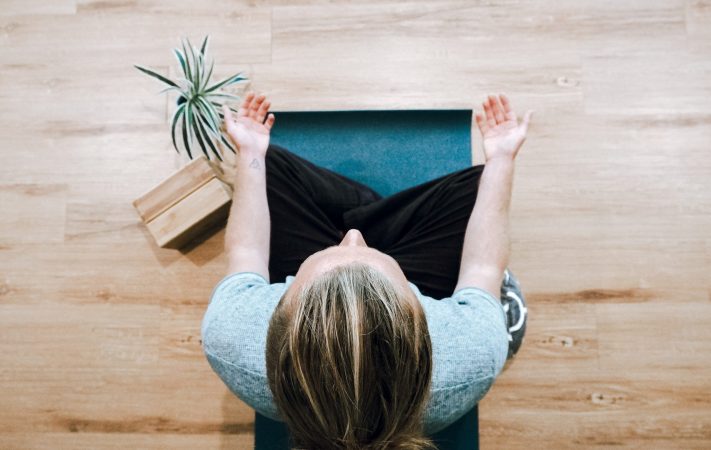Taking Advantage of a Tool that is always with you, THE BREATH.
Without the breath there is no life. This seems like a simple and obvious statement, however breathing is such a normal and regular part of daily life that one rarely pauses to notice how they are breathing. Unless there is something that is messing up the breath such as allergies, a sinus infection, surgery, illness, etc. it is unlikely that it is on your mind. This is not necessarily a bad thing; imagine if you constantly had to remind yourself to breathe for that action to take place? That would be a hassle! Given that adults typically take about 12-20 breaths per minute* it’s easy to be thankful that biology normally takes care of the breath for us.
So what does the breath have to do with mindfulness and meditation you ask? Everything. Breath is a crucial part of these practices dating back centuries. One reason the breath is used is because it’s always in the present; there is no way to breathe in the past or future so it is key to helping humans ground themselves in the present moment and become more attuned to the here and now. Let’s take a moment to break down the breath.
The Importance of using your Nose
When you inhale, opt for inhaling through the nose instead of the mouth. “Why?” You ask? There are several benefits to breathing through the nose and the primary one’s we are talking about here are temperature control and filtering. When you inhale through the nose as we are programmed to do from birth the nose hairs work as a filter for debris and toxins.
This means that the nose helps the body filter out these toxins typically sending them to the stomach instead of straight to the lungs. Temperature control is the next important part; inhaling through the nose helps the air arrive in the lungs at a temperature that the lungs enjoy instead of shocking it with too cold or hot of breath.
Last but not least breathing through your nose also humidifies the breath. Ever wake up with a dry mouth? This is likely due to mouth breathing at night. So throughout the exercises I will give I usually state the option of inhaling through the mouth typically due to sinuses but note that one should opt for nose breathing when possible.
Breathing and your Nervous System
The Sympathetic Nervous System
The other major part of the breath that we will discuss is how the breath also informs the body to engage in using its nervous system. This is not a biology lesson, just a brief overview on how cool and powerful the breath is. When your breath is quick and shallow it stimulates the nervous system, specifically the part of this system known as that Sympathetic Nervous System SNS, for short, because I personally don’t want to read nor type that out so many times :).
SNS is responsible for raising the heart rate and giving your body resources to respond to stress. SNS takes care of our survival and making sure we have the tools to make it through the stressors we face. Long-term shallow breathing keeps the body in an active state of stress. Sometimes we may not even notice that we are taking shallow chest breaths because in a society that values a flat stomach we may even hold our breath adding even more tension to our muscles.
The PARAsympathetic Nervous System
The other part of the nervous system is called the Parasympathetic Nervous System, PNS. The PNS is nicknamed the ‘rest and digest’ part of the system. It does exactly that: it tells your body to go back into a resting state and takes care of tasks like digestion which you can now partake in as you no longer need to tackle stress. If it seems weird that digestion halts and is part of the resting state of your body then think of it in that digesting takes time to occur and fully extract all the energy and nutrients for use. Your body keeps stores of ready to use energy on hand so it is going to use that during stress instead of focusing on what’s in the belly. It is possible to activate PNS by using diaphragmatic breathing also known as belly breathing.
For brevity this is basically the opposite of the short chest breaths this type of breathing focuses on the diaphragm. Hence the name. If you have done any kind of singing with a teacher of the singing arts then engaging this part of the body to breathe is not new. The diaphragm sits right under the lungs and is dome shaped. The body knows how to use it as this is how we breathe when we are born but through stress, past experiences and valuing flat tummies, chest breathing becomes more common.
Now, you have just a bit more information in your arsenal and hopefully a greater understanding of how powerful the breath is when it comes to regulating bodily functions but also ease and anxiety.
I look forward to hearing from you and hope this helps you as you take your own powerful and transformative journey. Per usual take what fits for you, leave what does not, and join me next time. Until then let’s stay social 🙂
*This content is not a substitute for professional advice, treatment, diagnosis, or similar. Do not delay seeking medical advice or treatment because of this content. For any concerns about your mental health consult your medical professionals. For more on this disclaimer.
Resources: *National Institute of Health















